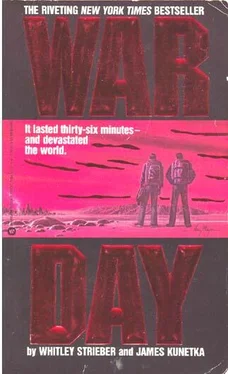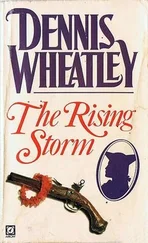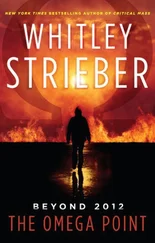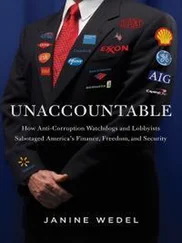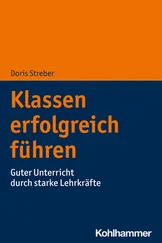This was the case with the cholera epidemic that created such suffering in South Texas last summer. We consider this to be a deeply damaged area, with the extensive residual radiation contamination from San Antonio, the uninhabitable zones, and the presence of an ill, malnourished, and restless Mexican population to the south. There was an unnoticed migration from Mexico into Texas all summer—more than three hundred thousand individuals were involved, virtually all of them starving. Many of these people moved right through the San Antonio Red Zone and began arriving in Dallas and Waco not only dying of starvation and radiation sickness, but carrying cholera. Neither of the first two problems is contagious, fortunately, but the cholera did spread to the local population. There were eight thousand deaths among registered inhabitants of the state, according to the Statistical Services Office.
Our treatment regime consisted of oral electrolyte replacement and treatment of exposed populations with tetracycline. The outbreak was quelled, but the real solution lies not in prophylaxis but in the restoration of sanitary facilities to prewar condition.
To communicate the extent of health problems in Texas, it is only necessary to talk about birth rates. The Southwest shares with the Northeast the dubious distinction of having a death rate four times in excess of its birth rate. And the number of mutations per 100,000 live births is 1,018, the highest in North America. In the Southwest we have placed birth mutations on the epidemic list and have put priority on obtaining working sonogram and amniocentesis equipment, so that parents can have some warning that their child may not be normal. In addition, the Relief has established criteria for abortion and mandatory destruction of nonassistable live births, to relieve parents of this difficult responsibility.
We encourage relocation of individuals out of the Yellow Zones south and east of San Antonio, and routinely triage those who refuse to move. The population of these counties has dropped roughly ninety-one percent since the war.
Since the beginning of my tour I have dealt with Cincinnati Flu, cholera, the first Nonspecific Sclerosing Disease panic in Dallas, a massive outbreak of brucellosis in Amarillo, apparently caused by the ingestion of contaminated milk smuggled up from Gonzales County, and numerous other smaller crises. I cannot say that my job is less than exceedingly challenging.
When my four-year tour of duty here is up, I expect to be posted back to England for six months of R-and-R and then down to the Argentine, where we have an extensive operation contending with malnutrition and its associated diseases.
You have asked me to be as personal as possible. What is the life of a Relief officer actually like? Do I meet with any hostility on the job? Of course, a certain amount. And I have emotional difficulties of my own. I must often make decisions that shorten and even take life. When I must isolate populations to prevent the spread of disease, and sometimes even withdraw medical assistance to allocate it to areas where help will still matter, I all but sweat blood.
On the other hand, I have been able to help enormous numbers of people. We have a large number of burn cases in Dallas, many of them scarred to the point of crippling: refugees from the South Texas firestorm, some of them profoundly crippled. I was a part of the committee that decided to allocate sufficient social resources to these people to prevent their dying of starvation or neglect and also to house them in public facilities. We do make decisions in favor of life whenever we can.
I live in an apartment at the Adolphus Hotel, along with the rest of the British here. Our government purchased the hotel because its large number of small suites are ideal for housing single public officials. Only our Commissioner has his family with him.
Until the Southwest Area is reclassified as safe, the rest of us may not bring our families in. So I have two lonely rooms with a long view to the south. The hotel service has been maintained quite well, so I am comfortable. Most of our foodstuffs and all of our liquor is imported. The food is all tinned, unfortunately, because we cannot risk building lifetime dosage to dangerous levels if we are to remain in our jobs for any length of time. So we cannot eat local food or drink local water. Dallas’s water supplies are from lakes, so there is a definite radiation problem, persisting even now. In the summer, long-half-life particles blow up from the south, and in the winter they come down from the north.
There is one saving grace here, though, and that is the people themselves. These are terribly determined people here. In fact, we have encountered few Americans who have not responded to the catastrophe in some positive manner. For example, Dallas normally works a six-day week now, and goes from eight to six. I have met some of the bravest and most wonderful people I have ever known here. I will never forget their calm courage in the face of death, nor their willingness to expose themselves to danger for the sake of others.
During the flu, for example, our main problem was keeping victims isolated from people who wanted to help them and were willing to endanger themselves to do so. At present we are turning away three-quarters of the applicants for paramedical training, because the teaching staff must concentrate on doctors. People in the paramedic job are exposed to contagious disease and radiation as a matter of routine. Another example of the high morale involves farmers. When we must condemn produce—which happens less and less often now, I’m glad to say—you would expect anger on the part of the farmers. We have come to anticipate complete cooperation. When crops are suspect, the farmers themselves are the first to tell us. “I got in a thunderstorm on the way in, looked like it had blown up from the south,” they might say, and assist us in checking the shipment for hot particles. They can be trusted to give the food to the disposal teams for burial if necessary. And these are all people who have known starvation in the most personal terms.
I recall that we sent out an emergency call for cleanup teams after the hot thunderstorm in April of 1989. There were hot spots all over Dallas. And by ’89 it was all long-half-life stuff. This radiation was not going to dissipate. We got more volunteers than we had gear for them to wear. People who were already triaged volunteered to work without protective clothing, which was in short supply. I think that the city was probably saved as a viable human community by the men and women who gave what remained of their lives during that cleanup.
Fortunately, most of the local thunderstorms are generated over Oklahoma and North Texas, so a hot storm coming up from the south is rare. There is the problem of radiation being carried down from the Dakotas, but this is not too severe. Most of that flow is southeastward, and affects the Midwest.
[NOTE: At this point Mr. Shandy’s breakfast arrived. This is the morning menu of a British Relief officer: one fried egg, one sausage, two kipper fillets, one bowl of oatmeal with cream, one small pot of tea, and one tablet of vitamin C.
Mr. Shandy ate his breakfast and made two telephone calls, one to the Reliefs human resources pool requesting a Spanish-speaking interpreter to accompany him on a field trip, and another to the Centers for Disease Control to inquire whether or not they were ready to try some newly designed kits intended for testing whole blood for contamination by what he referred to as “exotics.” He did not offer to expand on the content of these phone calls. After his breakfast he asked us what we most wanted to know from him.
We requested that he tell us of his experiences in and around San Antonio.]
Читать дальше
